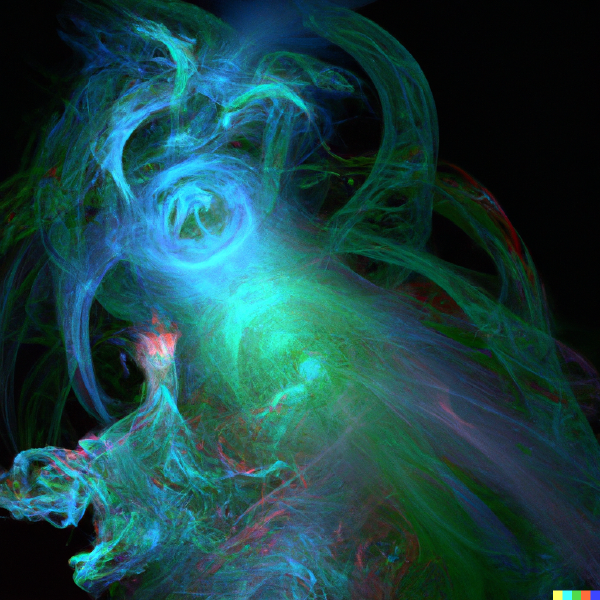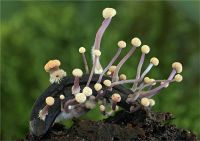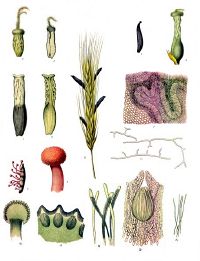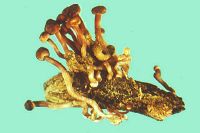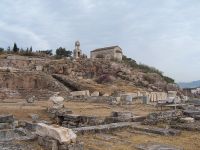(Created page with "'''A few thoughts on the terms “aesthetics” and “sustainability”…''' If you go by the definition of aesthetics by Erika Fischer-Lichte, an aesthetic experience is n...") |
No edit summary |
||
| (32 intermediate revisions by 2 users not shown) | |||
| Line 1: | Line 1: | ||
=='''Not All Who've Died Are Gone'''== | |||
''EssayArt Concept Text'' | |||
The Essay-Piece Not All Who’ve Died Are Gone explores the academic, research based, Essay Format as a mean of artistic expression. The work reduces the artistic approach down to its conceptual idea - in an approach of creating Objectless-Art. In the piece the conceptual text and project research become the work itself. This is done in an attempt to strip the work of unnecessary abstraction - to implant the questions raised directly into the readers’ mind. | |||
Bringing together historical research and autobiographical and personal narratives, the piece speaks upon the topic of confronting and dealing with the unavoidable reality of dying. | |||
The importance of a discussion about death has gained new significance, in times of the European involvement in war and the COVID-19 pandemic. To introduce perspectives from different times and cultures into the contemporary discourse holds a great importance for questioning the current belief systems and the world view shaped through/by them. | |||
The theme of death is dealt with through the topic of the Rye Ergot Fungus from two different perspectives: On the one hand through the fungus’ historical influence on Europe as a deadly medieval plage and as an ancient therapeutic medicine for the body and the mind. On the other hand the topics is dealt with through the personal impact on the author himself, during his research. Experiments to recreate the deadly Ancient Greek ritual drug “Kykeon” wich uses the Ergot Alkaloid LSA, as an impacting substance on the human psyche. In this process of experience driven experiments the author was confronted with his own fear of dying. | |||
The essay uses the contrast of formal scientific language and poetic trance to mediate between “objectivity” and “subjectivity”, between reality and dream, between history and the present. | |||
[[File:story aspects - not all who've dies.jpg|800px]] | |||
''Collection: Drafts of story/research aspects (State of Jan. 9th)'' | |||
[[:File:Ergot EssayArtPiece - aspects.pdf]] | |||
---- | |||
'''General Background of the Rye Ergot Fungus''' | |||
In the center of the work stands the ancient cult surrounding the elysian mysteries. A rebirth rituals dedicated to Demeter (Deity of grain and fertility) and Persephone (daughter of Demeter and forced bride to Hades) existing for almost 2000 years (1450 B.C - 300 A.C.) - which was central in the culture of the ancient Athenians. It was one of the few, if not the only ritual where no-one was excluded because of race, gender or social status. The only criteria was the ability to speak greek. | |||
Known as the best guarded mystery in ancient greece, not much is known about the secrets that the initiates were passing on through the generations. But all witness testimonies from then speak about life changing truths concerning life, the approach to death and (probably metaphorical) immortality. | |||
Historians in the last century believe that an [[Entheogen]] was involved in the yearly rituals. A drink called kykeon (anc. Greek: ‘mixture, potion’) - compiled from barley, mint, goat cheese and water. | |||
Although theories about the entheogenic substance involved are always speculations, it can be assumed that it was almost definitely the fungi Ergot (Claviceps purpurea). The Ergot fungus grows on barley and related plants and has a psychoactive effect that fits to the testimonies of what happened in Eulysis. | |||
Ergot can also be found in a symbiosis with the Hawaiian Baby Wood Rose (HBWR) and the Solanales Morning glory. Both of which were used as ritual Entheogens in other indigenes cultures. | |||
Although we have an idea what kind of ingredients were in the drink and what the effect must have been, the exact recipe was lost in history. | |||
The most central part of the work will be to understand and recreate kykeon - to illustrate that also Europe and the wester “democratic” patriarchal system has an origin deeply rooted in holistic, spiritual, non-linear and transcendental experiences. | |||
[[File:DALL·E 2022-10-31 19.20.29 - elysian mysteries.png|600px]] | |||
(The Elysian Mysteries interpreted by DALL E) | |||
The active and acting substance in Ergot and Kykeon is Ergoline, better known as lysergic acid (LSA). It was LSA out of which Hoffman synthesised LSD in the 1930s, stabilising the entheogenic effect and making the experience friendlier to the masses. | |||
The effect of Ergoline, as passed down from the mysteries of Eulysis and comparable to the ones of HBWR and Morning Glory, is a ‘trip’ in two phases. The first phase is the cleansing process. The toxins in the Ergot Alkaloids creates heavy nausea and leads to vomiting and finally to the subject fainting. After a 3-4h being unconscious the subject awakes and enters the second phase. Now the psychedelic experience begins. It is comparable to a mild LSD experience (commonly used to compare the strength of entheogens) and last for 6-12h. Peaking in the first third and then going gradually down until a sense of calmness and connectedness goes over into the ‘normal’ state of mind. | |||
The mentioned toxic Ergot Alkaloids, used in ancient greece to cleanse the body, caused tens of thousands of deaths in the central euopean dark ages. Because of a lack of understanding about the poisonous nature of Ergot, it was often consumed in bread and other wheat products. Because they where usually heating in the making process, the LSA lost its power and people where left with the toxins. Continuous consumption of Ergot leads to the deadly sickness called Ergotism, known at the time as St. Anthony’s Fire. Symptoms include: Nausea, weak immune system, hard problems because of blood thickening, paranoia, hallucinations, spasms and a burning pain in the limbs. Ergotism is often connected to be a contributor in the early plage disasters. It is also often connected to the witch persecution, especially in Salem (late 1600s). | |||
Because of its blood-thickening-effect, Ergot was also used in pre-medieval times as a medicine during child birth and strong bleeding during menstruation. | |||
Most facets revolving around the Ergot fungus are very fascinating to me and hold potential to explore them in an artistic way. But it is the lost secrets about the eleusian mysteries, that caught me the most. | |||
It speaks upon a culture that used a poison to transcend life and death, to find a holistic and non-linear understand about dying that has been lost with the mysteries in western society. | |||
The idea of holistic immortality is mostly lost in the euopean-christian believe system and was only brought back by modern science, though which we re-understood the cycles of life in nature and the inherent rebirth principles. With this project I try to shine light on the fact that these ideas can not only be found in eastern philosophy, or indigenous believes, but also in the core of our own, euopean, culture. | |||
“We have been given a reason not only to life, but also to die with better hope.” (Cicero of Rome, addressing the Mysteries) | |||
“Those who take part in them (the mysteries), posses. Better hope regarding the end of life and in regards to the whole aion (used as synonym to the existing of the whole wo*mankind)” (Isokrates) | |||
“The participation in the mysteries offered a guarantee of life without fear of death and of confidence in the face of death” (C. Kerényi - Eleusis, Archetypal Image of Mother and Daughter) | |||
“In the contemplation of that supreme being of love he will be purified of earthly leaven (transformation), and will behold beauty, not with the bodily eye, but with the eye of the mind, and will bring forth true creations of wisdom, and be a friend of god and heir of immortality.” (Sokrates in Plato’s Symposium) | |||
[[File:6220f55c385f3fb07f63abd307b55ab8.jpg|200px]] | |||
[[File:Claviceps_purpurea_-_Köhler–s_Medizinal-Pflanzen-185.jpg|200px]] | |||
[[File:ergot04.jpg|200px]] | |||
[[File:NAMA_Mystères_d'Eleusis.jpg|200px]][[File:General_view_of_sanctuary_of_Demeter_and_Kore_and_the_Telesterion_(Initiation_Hall),_center_for_the_Eleusinian_Mysteries,_Eleusis_(8191841684).jpg|200px]] | |||
---- | |||
'''state of research/progress''''' | |||
''in order of date added'' | |||
*[[A few thoughts on the terms “aesthetics” and “sustainability…]] | |||
*[[(7.Nov - Exp. #1) Extracting Ergin (LSA) from Ipomoea Tricolor using a simple CWE-Method]] | |||
*[[ Exp. #1 - Ingestion ('trip') report]] | |||
=='''''Collection of studies and references'''''== | |||
''conceptual/historical/philosophical (Ancient Greece)'' | |||
[[:File:PlatoJowettBenj_1998_SYMPOSIUM_Symposium.pdf]] | |||
[[:File:alcibiades_the_profane_images_of_the_mysteries.pdf]] | |||
[[:File:Alcibiades the Profane_ Images of the Mysteries in Plato?s Sympos.pdf]] | |||
''conceptual/historical/philosophical (Ergot fungi)'' | |||
[[:File:Global_Impact_of_Ergot_Alkaloids.pdf]] | |||
''chemical/biological'' | |||
[[:File:albert.hofmann-lsd.mein.sorgenkind.pdf]] | |||
[[:File:Ergot and Its Alkaloids.pdf]] | |||
[[:File:das Mutterkornalkaloid.pdf]] | |||
[[:File:Analyzing the Lysergic Acid Amide Content Extracted from the Seed.pdf]] | |||
===References=== | |||
Andrea Traldi Dream workshop | |||
* https://empathy.pixelache.ac/events/active-dreaming-for-empathy | |||
Latest revision as of 22:58, 30 January 2023
Not All Who've Died Are Gone
EssayArt Concept Text
The Essay-Piece Not All Who’ve Died Are Gone explores the academic, research based, Essay Format as a mean of artistic expression. The work reduces the artistic approach down to its conceptual idea - in an approach of creating Objectless-Art. In the piece the conceptual text and project research become the work itself. This is done in an attempt to strip the work of unnecessary abstraction - to implant the questions raised directly into the readers’ mind.
Bringing together historical research and autobiographical and personal narratives, the piece speaks upon the topic of confronting and dealing with the unavoidable reality of dying.
The importance of a discussion about death has gained new significance, in times of the European involvement in war and the COVID-19 pandemic. To introduce perspectives from different times and cultures into the contemporary discourse holds a great importance for questioning the current belief systems and the world view shaped through/by them.
The theme of death is dealt with through the topic of the Rye Ergot Fungus from two different perspectives: On the one hand through the fungus’ historical influence on Europe as a deadly medieval plage and as an ancient therapeutic medicine for the body and the mind. On the other hand the topics is dealt with through the personal impact on the author himself, during his research. Experiments to recreate the deadly Ancient Greek ritual drug “Kykeon” wich uses the Ergot Alkaloid LSA, as an impacting substance on the human psyche. In this process of experience driven experiments the author was confronted with his own fear of dying.
The essay uses the contrast of formal scientific language and poetic trance to mediate between “objectivity” and “subjectivity”, between reality and dream, between history and the present.
Collection: Drafts of story/research aspects (State of Jan. 9th)
File:Ergot EssayArtPiece - aspects.pdf
General Background of the Rye Ergot Fungus
In the center of the work stands the ancient cult surrounding the elysian mysteries. A rebirth rituals dedicated to Demeter (Deity of grain and fertility) and Persephone (daughter of Demeter and forced bride to Hades) existing for almost 2000 years (1450 B.C - 300 A.C.) - which was central in the culture of the ancient Athenians. It was one of the few, if not the only ritual where no-one was excluded because of race, gender or social status. The only criteria was the ability to speak greek. Known as the best guarded mystery in ancient greece, not much is known about the secrets that the initiates were passing on through the generations. But all witness testimonies from then speak about life changing truths concerning life, the approach to death and (probably metaphorical) immortality. Historians in the last century believe that an Entheogen was involved in the yearly rituals. A drink called kykeon (anc. Greek: ‘mixture, potion’) - compiled from barley, mint, goat cheese and water. Although theories about the entheogenic substance involved are always speculations, it can be assumed that it was almost definitely the fungi Ergot (Claviceps purpurea). The Ergot fungus grows on barley and related plants and has a psychoactive effect that fits to the testimonies of what happened in Eulysis.
Ergot can also be found in a symbiosis with the Hawaiian Baby Wood Rose (HBWR) and the Solanales Morning glory. Both of which were used as ritual Entheogens in other indigenes cultures. Although we have an idea what kind of ingredients were in the drink and what the effect must have been, the exact recipe was lost in history.
The most central part of the work will be to understand and recreate kykeon - to illustrate that also Europe and the wester “democratic” patriarchal system has an origin deeply rooted in holistic, spiritual, non-linear and transcendental experiences.
(The Elysian Mysteries interpreted by DALL E)
The active and acting substance in Ergot and Kykeon is Ergoline, better known as lysergic acid (LSA). It was LSA out of which Hoffman synthesised LSD in the 1930s, stabilising the entheogenic effect and making the experience friendlier to the masses. The effect of Ergoline, as passed down from the mysteries of Eulysis and comparable to the ones of HBWR and Morning Glory, is a ‘trip’ in two phases. The first phase is the cleansing process. The toxins in the Ergot Alkaloids creates heavy nausea and leads to vomiting and finally to the subject fainting. After a 3-4h being unconscious the subject awakes and enters the second phase. Now the psychedelic experience begins. It is comparable to a mild LSD experience (commonly used to compare the strength of entheogens) and last for 6-12h. Peaking in the first third and then going gradually down until a sense of calmness and connectedness goes over into the ‘normal’ state of mind.
The mentioned toxic Ergot Alkaloids, used in ancient greece to cleanse the body, caused tens of thousands of deaths in the central euopean dark ages. Because of a lack of understanding about the poisonous nature of Ergot, it was often consumed in bread and other wheat products. Because they where usually heating in the making process, the LSA lost its power and people where left with the toxins. Continuous consumption of Ergot leads to the deadly sickness called Ergotism, known at the time as St. Anthony’s Fire. Symptoms include: Nausea, weak immune system, hard problems because of blood thickening, paranoia, hallucinations, spasms and a burning pain in the limbs. Ergotism is often connected to be a contributor in the early plage disasters. It is also often connected to the witch persecution, especially in Salem (late 1600s). Because of its blood-thickening-effect, Ergot was also used in pre-medieval times as a medicine during child birth and strong bleeding during menstruation.
Most facets revolving around the Ergot fungus are very fascinating to me and hold potential to explore them in an artistic way. But it is the lost secrets about the eleusian mysteries, that caught me the most.
It speaks upon a culture that used a poison to transcend life and death, to find a holistic and non-linear understand about dying that has been lost with the mysteries in western society.
The idea of holistic immortality is mostly lost in the euopean-christian believe system and was only brought back by modern science, though which we re-understood the cycles of life in nature and the inherent rebirth principles. With this project I try to shine light on the fact that these ideas can not only be found in eastern philosophy, or indigenous believes, but also in the core of our own, euopean, culture.
“We have been given a reason not only to life, but also to die with better hope.” (Cicero of Rome, addressing the Mysteries)
“Those who take part in them (the mysteries), posses. Better hope regarding the end of life and in regards to the whole aion (used as synonym to the existing of the whole wo*mankind)” (Isokrates)
“The participation in the mysteries offered a guarantee of life without fear of death and of confidence in the face of death” (C. Kerényi - Eleusis, Archetypal Image of Mother and Daughter)
“In the contemplation of that supreme being of love he will be purified of earthly leaven (transformation), and will behold beauty, not with the bodily eye, but with the eye of the mind, and will bring forth true creations of wisdom, and be a friend of god and heir of immortality.” (Sokrates in Plato’s Symposium)
state of research/progress
in order of date added
Collection of studies and references
conceptual/historical/philosophical (Ancient Greece)
File:PlatoJowettBenj_1998_SYMPOSIUM_Symposium.pdf File:alcibiades_the_profane_images_of_the_mysteries.pdf File:Alcibiades the Profane_ Images of the Mysteries in Plato?s Sympos.pdf
conceptual/historical/philosophical (Ergot fungi)
File:Global_Impact_of_Ergot_Alkaloids.pdf
chemical/biological
File:albert.hofmann-lsd.mein.sorgenkind.pdf File:Ergot and Its Alkaloids.pdf File:das Mutterkornalkaloid.pdf File:Analyzing the Lysergic Acid Amide Content Extracted from the Seed.pdf
References
Andrea Traldi Dream workshop

